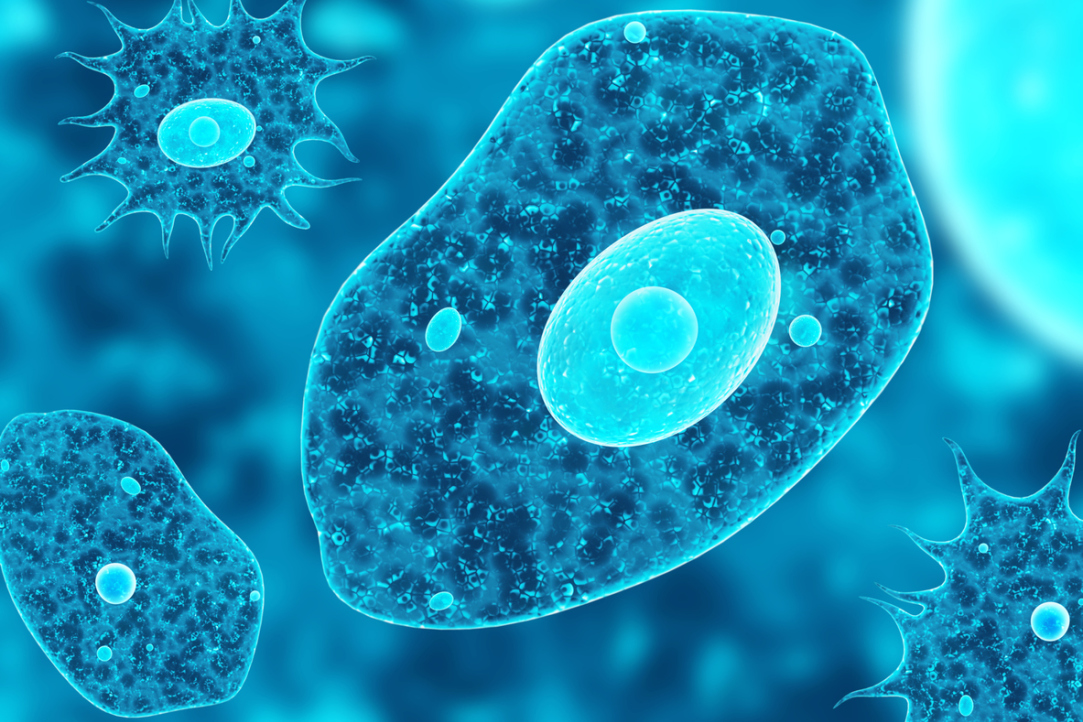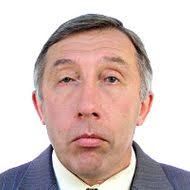Who Maintains Discipline in a Live Cell: Physics Perspective

Italian and Russian researchers confirmed the hypothesis that the self-maintaining order in eukaryotic cells (cells with nuclei) is a result of two spontaneous mechanisms’ collaboration. Similar molecules gather into ‘drops’ on the membrane and then leave it as tiny vesicles enriched by the collected molecules. The paper with the research results was published in the journal Physical Review Letters.
The research was carried out by an international interdisciplinary team of biologists (from Polytechnic University of Turin, Italian Institute for Genomic Medicine of the University of Turin and Candiolo Cancer Institute) and physicists (from Landau Institute for Theoretical Physics and HSE University Faculty of Physics).
Igor Kolokolov, Director of the Landau Institute for Theoretical Physics (RAS) and Head of the HSE Department for Theoretical Physic

Participation of physics theoreticians in biological studies can be rather important, when in the investigated phenomena, we can detect a universal structure, which is poorly sensitive to chemical and other detail. Of course, the biology problem setting is primary, and without our colleagues, biologists, there would be no such study. But generally speaking, such collaboration of biologists, oncologists and physics theoreticians comprises a modern swiftly developing scientific area – physical biology.
A eukaryotic cell has a nucleus and is the main structural unit of all animals and plants. With a microscope, one can see that it is a complicated structure consisting of many compartments divided by membranes. Each compartment plays its role in cell functioning and is occupied by certain molecules. The cell preserves this internal order when it interacts with the environment, and, if no pathologies interfere, it does not degrade to a shapeless gathering of molecules. An important role in a eukaryotic cell’s sustainability is played by the process of spatial re-ordering and molecule delivery to correct destinations.
Vladimir Lebedev, Professor at the HSE Joint Department for Theoretical Physics with the Landau Institute for Theoretical Physics

This process is reminiscent of a daily cleaning in a big and crowded house. But this house doesn’t have an obvious housekeeper, and it looks like this important work happens by itself, with unclear rules.
In their paper Optimality in Self-Organized Molecular Sorting, the researchers proposed, analysed and experimentally tested the hypothesis that such self-maintaining order in eukaryotic cells is a result of joint action of two spontaneous mechanisms. First, similar molecules aggregate on the membrane into clusters, similarly to water drops that aggregate in a subcooled cloud and make up a fog. Second, these ‘drops’ induce a local membrane curvature, and, in the end, form tiny vesicles. Enriched with the gathered molecules, these vesicles detach from the membrane and start they journey in the cell. That’s why many internal membranes of a eukaryotic cell are natural distillers, with ready-made production delivered to the end consumer (in another cell compartment) in a ‘bottle’.
The published paper suggests a mathematical apparatus that allows universal features in the kinetics of such distillation to be detected. Its adequacy has been tested by direct quantitative modelling. The researchers discovered that for each sort of molecules, there are optimal indicators of parameters, such as cluster appearance frequency, with which the whole distillation process is maximally effective. In particular, if the frequency is too low, distillation is too slow. If it is too high, many small drops quickly evolve and cover a considerable area on the membrane, but none of them reaches the critical size within reasonable time, which is needed to form a vesicle.
‘In terms of physics, molecule movement on the membrane follows the laws of diffusion (chaotic, irreversible movement) and the structure of these molecules and the membrane determine only one parameter – the coefficient of this diffusion. The laws of diffusion mean that on a 2D surface, which is a membrane, the probability of molecule arriving in the determined area poorly depends on the size of this area. It is a key thing, which looks to be the main reason that many vital cell processes take place on internal membranes, which are two-dimensional, and intermembrane volume serves mostly as a warehouse for the mix of necessary substances,’ said Prof. Kolokolov.
The paper also includes the results of experimental observation of distillation processes in cells taken from blood vessels in human umbilical tissue. The experimental data confirm the theoretical construction, including such an important feature as distribution of growing enriched clusters by size.
‘Our paper uses the nucleus growth law, which can be illustrated as follows: if in a boiling pot you see a centimetre-sized bubble, that means that a split second ago, it still existed but was the size of a millimetre, it was not born centimetre-sized,’ explained Igor Kolokolov. ‘These concepts, brilliantly used decades ago by Ilya Lifshitz and Vitaly Slezov in the kinetics of first‐order phase transitions, turned out to be very useful in our research, too.’
The paper allows us to conclude that in evolutionary terms, live cells ‘work’ with optimal parameters that provide maximum efficiency in the process of molecular reorganization.
The study results are interesting for medical applications, since the defects in the process of molecular re-ordering are related to many serious diseases, including cancer. Creating a universal and clear description that helps determine the parameters of this process management is an important first step, which is essential for the search of treatment opportunities.
The study was also supported by the National Institute of Nuclear Physics (INFN, Italy), Carlo Alberto College, HSE University, and AIRC Foundation for Cancer Research in Italy.
See also:
Early-Career Researchers Discuss Cooperation between Russia and Arab States
HSE University has hosted a conference entitled ‘Russia—The Arab World: Digital Future and Youth Cooperation,’ organised by the Faculty of World Economy and International Affairs (WEIA). The meeting took place in the run-up to the first Russian–Arab summit, due to be held in Moscow on October 15, 2025.
Pivot to the East: A Comprehensive Study of the Cultural and Civilisational Centres of the Non-Western World is the Top Priority
China and the Chinese world, South Asia, Southeast Asia, the Arab countries, Iran, Turkey, Central Asia and Africa are gaining new significance in Russia’s foreign policy. However, we do not know enough about the Eastern countries. It is necessary to change the priorities in education, starting from grammar school. Prospects for the development of domestic Oriental studies in the context of the new stage in the development of the system of international relations were discussed at a round table at HSE University.
‘I Admire HSE Students’ Eagerness to Learn, to Discuss, to Broaden Their Perspectives’
Robert Romanowski was a ‘Digital Professor’ at HSE University in November 2021. In his interview for the HSE News Service, he talked about the specifics of online teaching, his course on Strategic Branding, and the skills that are essential for marketing professionals today.
Russia and Africa: Time to Expand Cooperation
There is major potential for economic and humanitarian cooperation between Russia and African countries. Particularly, Russian organisations and universities can help transfer competencies and knowledge in the fields of agriculture, energy, industrial production, environmental management, climate change, and public administration. Experts and representatives of African embassies in Russia discussed these issues at the round table ‘Russia-Africa Sharing Knowledge’ hosted by HSE University.
The Brain in Space: Investigating the Effects of Long Spaceflights on Space Travellers
As part of an international project conducted with the participation of Roscosmos and the European Space Agency, a team of researchers used differential tractography to analyse dMRI scans ofcosmonauts’ brains and found significant changes in brain connectivity, with some of the changes persisting after seven months back on Earth. The paper is published in Frontiers in Neural Circuits.
HSE University-Perm and the Training Centre of the Uzbek Ministry of Finance Sign Cooperation Agreement
HSE University in Perm has become the first academic partner of the Training Centre under the Ministry of Finance of the Republic of Uzbekistan. The parties have signed a cooperation agreement in education and research.
HSE University Strengthens Ties with Netherlands in Agricultural Research and Education
On November 9, 2021, HSE University signed a memorandum of understanding with Wageningen University & Research, a major university in the Netherlands and one of the leading agricultural research institutes in the world. Participants of the signing ceremony included HSE University Rector Nikita Anisimov, President of the Wageningen University & Research Executive Board Professor Louise Fresco, and Dutch Ambassador to Russia Gilles Beschoor Plug.
The Majority of Russians Do Not Support Microchip Implants
The majority of Russians would not agree to being fitted with microchip implants for any purposes—medical or otherwise. A joint study conducted by HSE University’s International Laboratory for Applied Network Research and Aventica found that respondents believe the risks of personal data leaks and misuse to be too high.
‘We Can Now Say That the Finance Conference Is Global’
The 10th International Moscow Finance Conference, organized by HSE ICEF, took place on October 29–30 online. Vladimir Sokolov, Head of the International Laboratory of Financial Economics, which hosted the conference, talks about the participants, the key presentation topics and how they will impact the global economy.
HSE University Scholars Study Green Transition Risks and Greenhouse Gas Emission Regulation
The UN Climate Change Conference is taking place from October 31 to November 12 in Glasgow. The conference focuses on preventive measures against the catastrophic and irreversible consequences of rising average global air temperatures. Igor Makarov, Head of the HSE Laboratory for Economics of Climate Change, will be taking part in the Glasgow conference. In the following interview, he speaks about the pressing problems Russia and the world are facing, and the research HSE scholars are doing on climate change.


